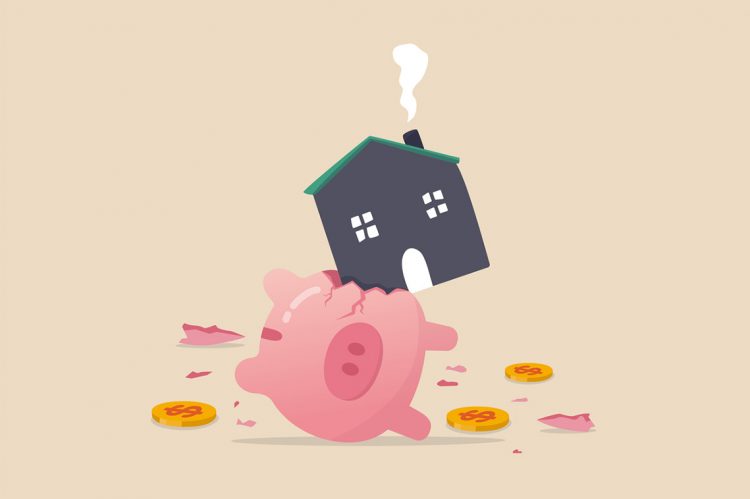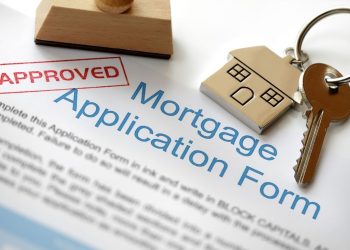When this country was founded, very few people could own homes—not due to lack of resources or desire, but because laws disallowed them from doing so. It took hundreds of years and tremendous bloodshed to get to this point, and even now, some practices and regions continue to perpetuate housing inequity.
Attempting to parse out where progress has been made and where it has stalled, the National Association of REALTORS® (NAR) released its annual report on home wealth gains that breaks down regional, racial and income segments, finding that Black families are falling behind as others have benefited tremendously from homeownership opportunities.
Maybe the biggest takeaway: the recent housing boom did not benefit Black Americans nearly as much as it did other groups. With a homeownership rate of 44.9% (compared to 74.5% for white folks), Black homeowners also saw the smallest wealth gains—$115,00 on average compared to $138,000 for white families and $239,000 for Asian families.
This data provides further evidence of what a plethora of analyses and data has shown in recent years—that the opportunities and the American Dream of homeownership remain unequally available to all Americans.
How the other half lives
The NAR report opens by noting that housing accounted for a whopping 19% of all economic activity in 2022, meaning the importance of these disparities cannot be overstated. As homes have appreciated faster, many of the inequities in housing have also persisted.
Black-owned homes are on average $64,000 less valuable than white-owned homes, according to the NAR report, and studies have found that even identical houses in comparable locations are devalued if they are in Black-marjoiry neighborhoods.
At the same time, the median-priced property is worth $190,000 more now than it was a decade ago, according to NAR, meaning housing wealth continues to prove a positive investment for nearly every homeowner.
But Black and Hispanic families (who have a homeownership rate of 48.5%) often miss out on these wealth gains. While Hispanic families actually outpaced white families in average wealth building ($162,000 over 10 years), the largest wealth gains came in exclusive, expensive regions—which are highly segregated in many places.
The NAR report highlights the San Francisco Bay Area, which, by many metrics, contains some of the most expensive (and segregated) neighborhoods in the country.
“No matter the income level, owners who live in expensive metro areas experienced the largest wealth gains,” the report said. “In the San Jose metro area, low-income owners have accumulated nearly $630,000 in wealth in the last decade; middle-income owners gained $643,000, and upper-income owners gained nearly $840,000. San Francisco and Salinas were some other areas where all owners—any income level—experienced substantial wealth gains due to price appreciation.”
Whether it is the explicit racism of appraiser bias or the long-term legacy of redlining, the benefits of homeownership still offer less to Black families. Overall, Black homeowners saw their homes appreciate faster than properties owned by white families in only 27% of areas studied, meaning it often takes longer for Black families to accumulate wealth. The study noted that Black homeowners often hold on to homes for longer—18.6 years on average compared to 16.5 for white families and 12.1 for Asian families.
Regionally, Asian, Hispanic and Black homeowners did best in the West, with a few areas vastly outpacing the national averages for housing wealth. Bremerton, Washington, for instance offered Black homeowners an average of $585,710 in housing wealth over the last decade—more than five times the national average. Provo, Utah, and Santa Maria, California, also saw Black homeownership wealth exceed $500,000.
But again, to access this housing wealth, you need to own a home, and the NAR report found homeownership rates for Black families continuing to lag, even as Hispanic and other groups have made gains in recent years.
“(T)he Black homeownership rate hasn’t kept pace with increases in the other racial/ethnic groups, making the gap even larger between white and Black homeownership rates,” the NAR report said.
Other side of the tracks
The report also examined disparities in income groups—whether middle-, lower- or upper-income groups were benefiting most from investing in a home, and where these families were most likely to buy their homes.
While upper-income families gained more in pure dollars, the NAR analysis found that lower-income families actually see a higher proportional increase in the value of their homes—75% over 10 years on average, or just over $98,000. Middle-income homeowners watched their properties appreciate by 68%.
But the regional disparities even within income groups were tremendous. A low-income homeowner who bought a house in California might have gained $290,000 in wealth, while low-income homeowners in other states may have only built around $14,000 in the same time period. Middle-income homeowners who bought in the right place (again, usually California) could have gained up to $642,000, though other areas where housing is more affordable still offered good value.
“In the top 10 areas with the highest homeownership rates for middle-income households, these owners gained $110,000 in wealth on average in the last 10 years. For example, middle-income owners in Barnstable Town, Massachusetts, gained about $170,000 due to price appreciation in the last decade,” the report says.
Upper-income buyers built over $150,000 over the last decade, though their homes started out much more valuable, the report notes.
Unsurprisingly, low-income households are concentrated in the South, where housing is broadly more affordable. Six Florida metros—Ocala, North Port, Port St. Lucie, Palm Bay, Deltona and Cape Coral—made the top 10 list for metros with low-income homeowners, all with a homeownership rate of more than 62% for this income bracket.
Middle-income homeownership was more common in the Midwest and South. Ogden, Utah, boasted a homeownership rate of 84.8%, second only to Barnstable Town, Massachusetts (85.8%). York, Pennsylvania; Duluth, Minnesota; Peoria, Illinois and Cedar Rapids, Iowa, also made the top 10 for middle-income homeownership, all above an 81% rate.
Upper-income homeownership rates were also highest out in the Midwest and more modest areas, with Rochester, Minnesota; and two Iowa metros—Des Moines and Cedar Rapids—topping 96% homeownership rate for affluent households.












